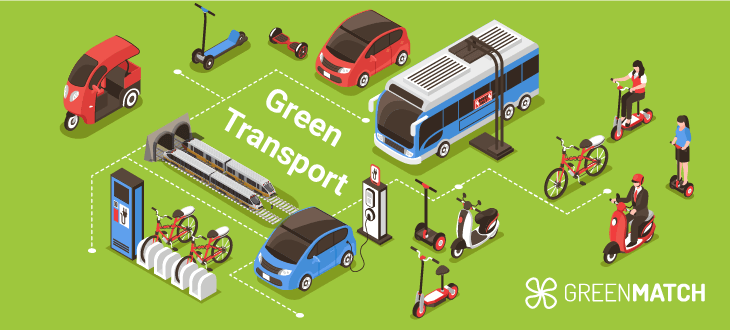In an era where environmental concerns are at the forefront of global discourse, you are likely seeking ways to align your transportation choices with sustainable practices. “Green Driving: A Guide to Eco-Friendly Bus and Sustainable Transportation” offers valuable insights into reducing your carbon footprint while navigating the urban landscape.
Whether looking for a Long Island bus accident lawyer, this guide gives you the knowledge to make informed decisions about eco-friendly buses and other sustainable transit options.
Understanding Green Driving: What Makes a Bus Eco-Friendly?
The Role of Alternative Fuels
Eco-friendly buses often utilize alternative fuels, including compressed natural gas (CNG), biodiesel, or electricity. These fuels significantly reduce carbon emissions compared to conventional diesel-fueled buses. Electric buses, for instance, produce zero tailpipe emissions, making them an ideal solution for urban areas grappling with air pollution. Moreover, adopting alternative fuels contributes to energy security by reducing dependence on fossil fuels.
Efficient Design and Technology
Modern eco-friendly buses feature advanced designs and technologies designed to maximize fuel efficiency. Lightweight materials, aerodynamic shapes, and efficient powertrain systems are integral to these vehicles. Additionally, regenerative braking systems convert kinetic energy into stored energy, enhancing fuel economy. This combination of design and technology reduces the overall environmental footprint of public transportation.
The Impact of Reduced Emissions
The shift to eco-friendly buses reduces greenhouse gas emissions and mitigates other harmful pollutants, such as nitrogen oxides and particulate matter. These reductions improve air quality, thereby promoting public health and well-being. Furthermore, lower emissions contribute to the fight against climate change by diminishing the transportation sector’s impact on global warming.
Benefits of Sustainable Transportation: Environmental and Economic Impacts
Environmental Advantages
Sustainable transportation significantly impacts the environment by reducing greenhouse gas emissions and curbing air pollution. Traditional vehicles, which rely heavily on fossil fuels, contribute to carbon dioxide emissions, a leading cause of climate change.
You can play a vital role in mitigating these harmful effects by adopting eco-friendly buses and other green transportation modes, such as electric or hydrogen-powered vehicles. These advancements reduce the carbon footprint and promote cleaner air, leading to improved public health and the preservation of natural ecosystems.
Economic Benefits
From an economic perspective, sustainable transportation offers substantial financial advantages. Transitioning to eco-friendly buses and sustainable transport systems can save considerable costs over time. Electric and hybrid vehicles typically require less maintenance and have lower fuel costs than conventional internal combustion engines.
Moreover, investing in sustainable transportation infrastructure can spur job creation in the green technology sector, driving innovation and economic growth. Governments and businesses can capitalize on these opportunities by supporting sustainable transit solutions, ultimately contributing to a more resilient and competitive economy.
The Future of Eco-Friendly Bus Systems: Innovations and Trends in Green Driving
Technological Advancements
Eco-friendly bus systems are at the forefront of technological innovation. Electric buses, equipped with state-of-the-art battery systems, are becoming an increasingly viable alternative to traditional diesel buses.
With advancements in battery capacity and charging infrastructure, these zero-emission vehicles offer a sustainable solution to urban transportation challenges. Hydrogen fuel cell technology is gaining traction, offering an alternative clean energy source with rapid refueling capabilities and extended ranges.
Infrastructure and Connectivity
Another significant trend is the development of smart infrastructure that supports eco-friendly transportation. Cities are investing in smart grids and charging stations to seamlessly integrate electric and hybrid buses into existing networks. Moreover, the Internet of Things (IoT) enhances connectivity, enabling real-time data exchange that optimizes route planning and energy consumption. This interconnected system improves efficiency and reduces the carbon footprint of public transport.
Policy and Public Engagement
Government policies play a crucial role in promoting green driving initiatives. Incentives for adopting eco-friendly technology, such as tax rebates and grants, encourage bus operators to transition to cleaner fleets. Public engagement is equally essential; raising awareness about the benefits of sustainable transportation can foster community support and increase ridership. By aligning policy with public interest, cities can create a robust framework for the future of eco-friendly transportation.
Final Thoughts
As you embark on your journey towards greener transportation, embracing eco-friendly bus options and sustainable travel practices becomes pivotal in reducing your carbon footprint. Whether you’re looking for a Long Island bus accident lawyer, by choosing these alternatives, you contribute to a healthier planet while promoting innovation in transportation.
Your decisions today pave the way for a cleaner, more sustainable future, ensuring that the roads we travel on are not just pathways to our destinations but symbols of our commitment to environmental stewardship.
